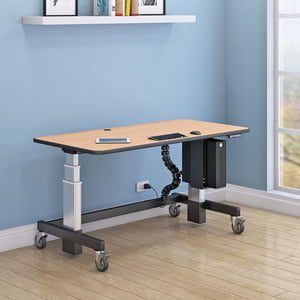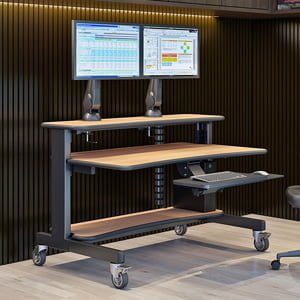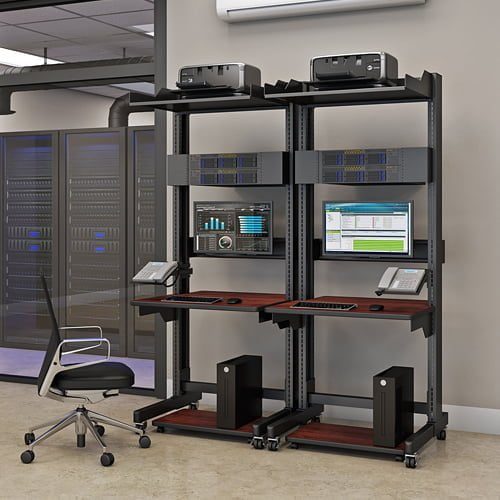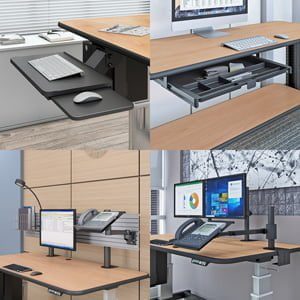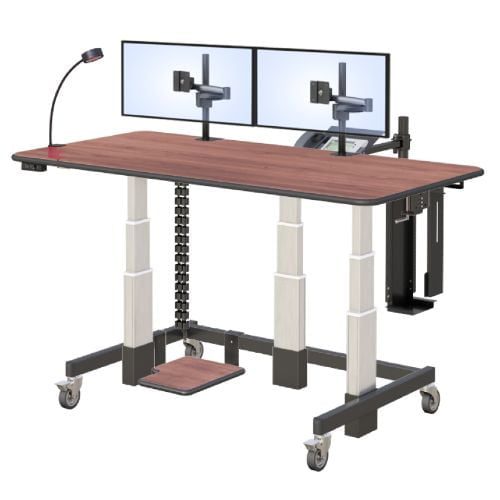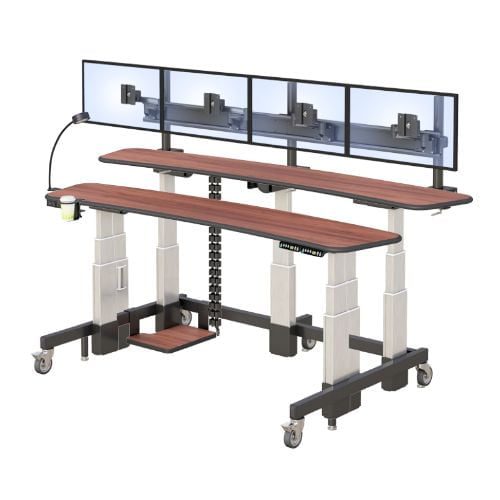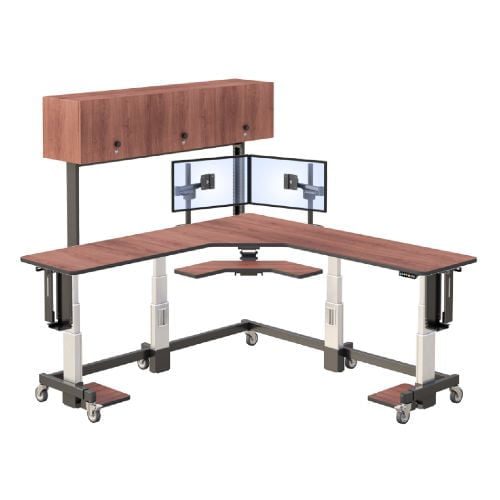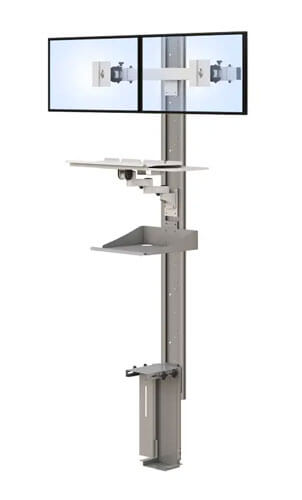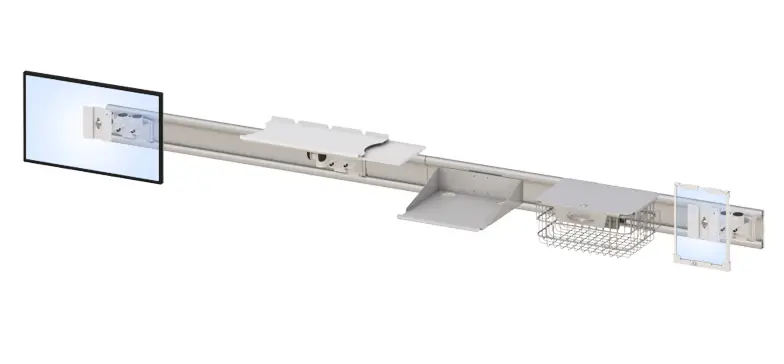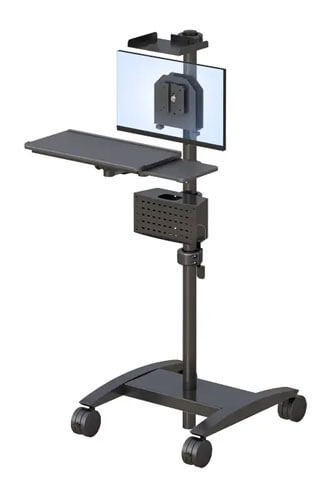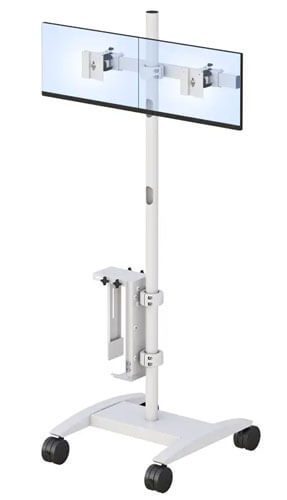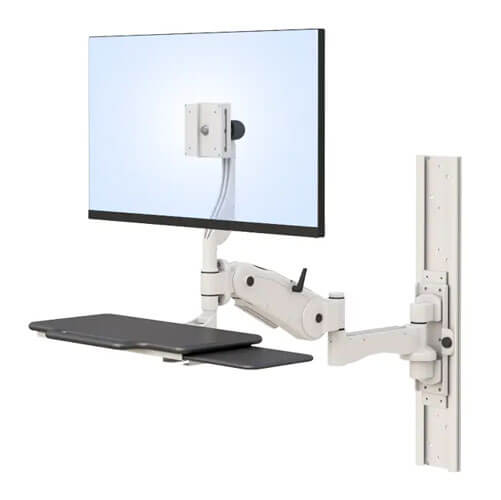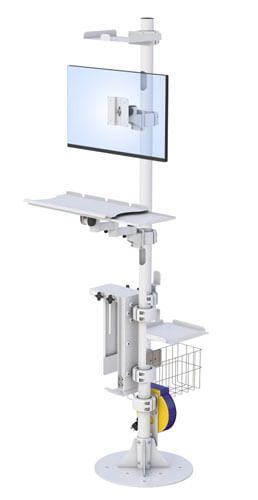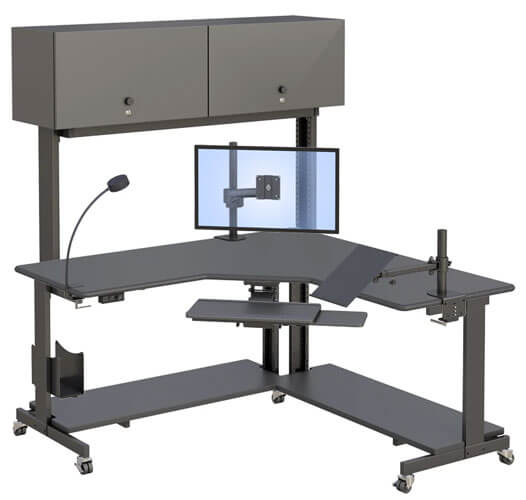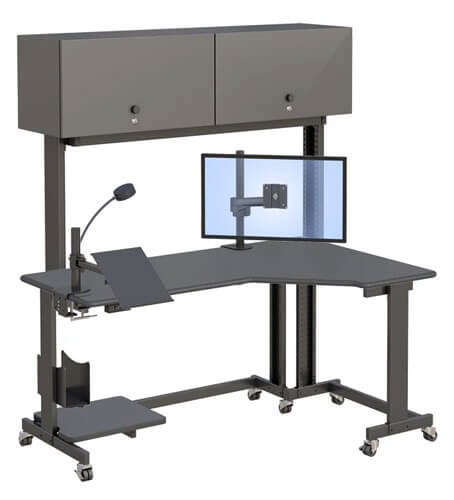Using a standing desk properly might help relieve back pain caused by excessive sitting.
BY Author: Carlos Bagley, M.D.
Can a standing desk help my back pain?
Using a standing desk properly might help relieve back pain caused by excessive sitting. You might have heard the phrase “sitting is the new smoking,” which acknowledges that leading a sedentary lifestyle and sitting at a desk all day at work is not good for your health. It’s true – studies have shown that sitting for prolonged periods of time can lead to back and neck pain, weight gain, high blood pressure, high cholesterol, Type 2 diabetes, and cardiovascular disease. In fact, an October 2017 study in Annals of Internal Medicine found that sitting for long periods of time each day, whether in continuous bouts or in spurts, also contributes to an increased risk of death.
For the many people who spend countless hours sitting at a desk, one of the most attractive options to hit the market is the standing desk, an apparatus touted as a way to improve posture, relieve back and neck pain, and increase productivity. Because standing desks still are relatively new products, we need more evidence to determine how they benefit our health and the optimal ratio between sitting and standing. However, initial data suggest there are advantages to standing during the workday rather than just sitting.
Benefits of standing desks
A (small) calorie burn Standing burns more calories than sitting, but not a lot more. According to a November 2017 study in Circulation, standing burned an extra .15 calories per minute compared to sitting. To put that in perspective, a 154-pound (70 kg) person who stands for six hours a day will burn an extra 54 calories. Increased productivity Using a standing desk also might make you more productive, whether you’re working on a big sales presentation or your personal budget. A small 2016 study suggests that employees in a call center who used a standing desk were 45 percent more productive on a daily basis than their seated colleagues. Less back pain Using a standing desk and moving more throughout the day has been shown to improve back pain. hair extension for sale According to a small 2018 study, patients who used a sit-stand desk and participated in counseling to improve sedentary behavior experienced a 50 percent decrease in low back pain compared to a control group that had neither intervention. Is a standing desk right for you? Although a standing desk might improve back pain, it’s likely not a cure-all. For example, a standing desk might help improve your posture and take the pressure off your neck and lower back; however, it’s not enough to correct more serious problems, such as scoliosis or a bulging disc.
And some health conditions actually can arise from standing too much. Patients at risk for heart or vascular conditions might develop deep vein thrombosis or varicose veins from spending too much time on their feet. Other issues might include back pain caused by poor posture, leg or foot pain, or swelling in the legs. Also consider the type of work you do before choosing a standing desk. Some people find it easier to concentrate when they can stand and shift their weight back and forth while taking phone calls or typing. However, some people’s brains aren’t wired that way, and they have a hard time performing creative tasks such as writing or designing while standing.
Tips for using a standing desk properly Adjust it to an appropriate height Our bodies naturally settle into a neutral position with an arched or slouched back. Whether sitting or standing, this position can strain your bones and muscles, causing pain. When you set up your standing desk, adjust the desk height so your head, neck, and spine are aligned. Your head should be slightly back, your hips should be straight ahead, and your spine should have an “S” curve. You should be able to rest your wrists flat on the desk with your elbows at a 90-degree angle, and your computer monitor should be at or below eye level. Paryaj Pam / Kisa Ki Paryaj Pam lan Ease into using the desk slowly Going from sitting for eight hours straight to standing all day can be taxing on your back if you don’t give your body time to adjust. Start by standing for 30 minutes a few times a day. Then work up to blocks of one hour, then two, then four hours over several weeks. Eventually, you likely can stand as long as you prefer. Take care of your feet Standing in one spot can make your feet and legs sore, particularly if the floor is cement or not carpeted. Wear supportive shoes (preferably athletic shoes, if allowed) while standing to protect your feet. Also, stand on an anti-fatigue mat, which is a cushioned mat that supports the arches to reduce soreness in the feet and legs.
Vary standing with walking and sitting
Standing still can be just as unhealthy as sitting still. Make a point to change positions, shift your weight, and take short walk breaks every 30 minutes or so. Use this time productively by getting a drink of water, Engine control module auto computers ecm pcm walking to a colleague’s desk instead of sending an email, or doing a few squats or lunges at your desk. When you sit, make sure your lower back is supported, your head and neck are in a neutral position, and your shoulders are relaxed. Your knees should be in line with your hips when your feet are planted firmly on the floor or on a footrest.

